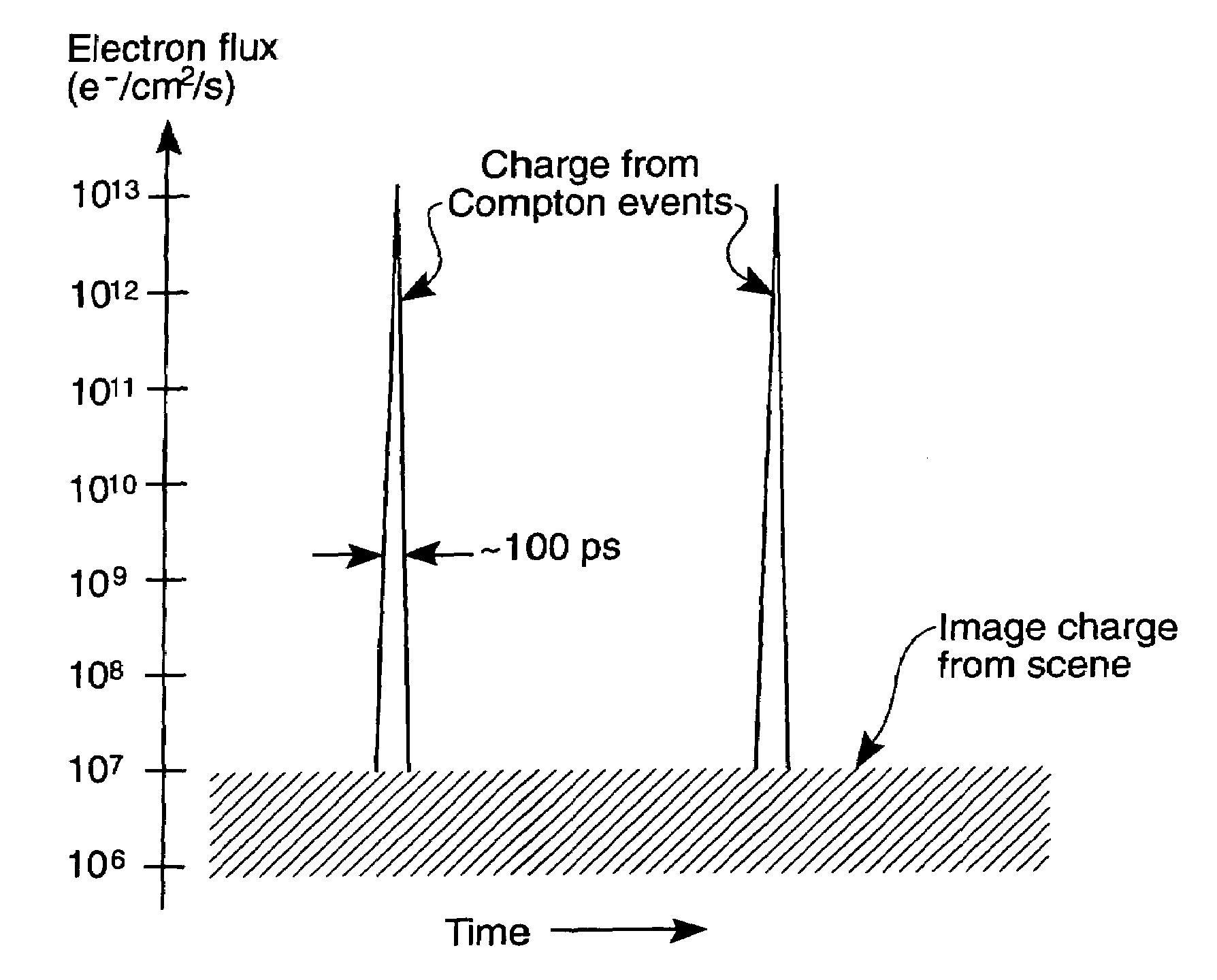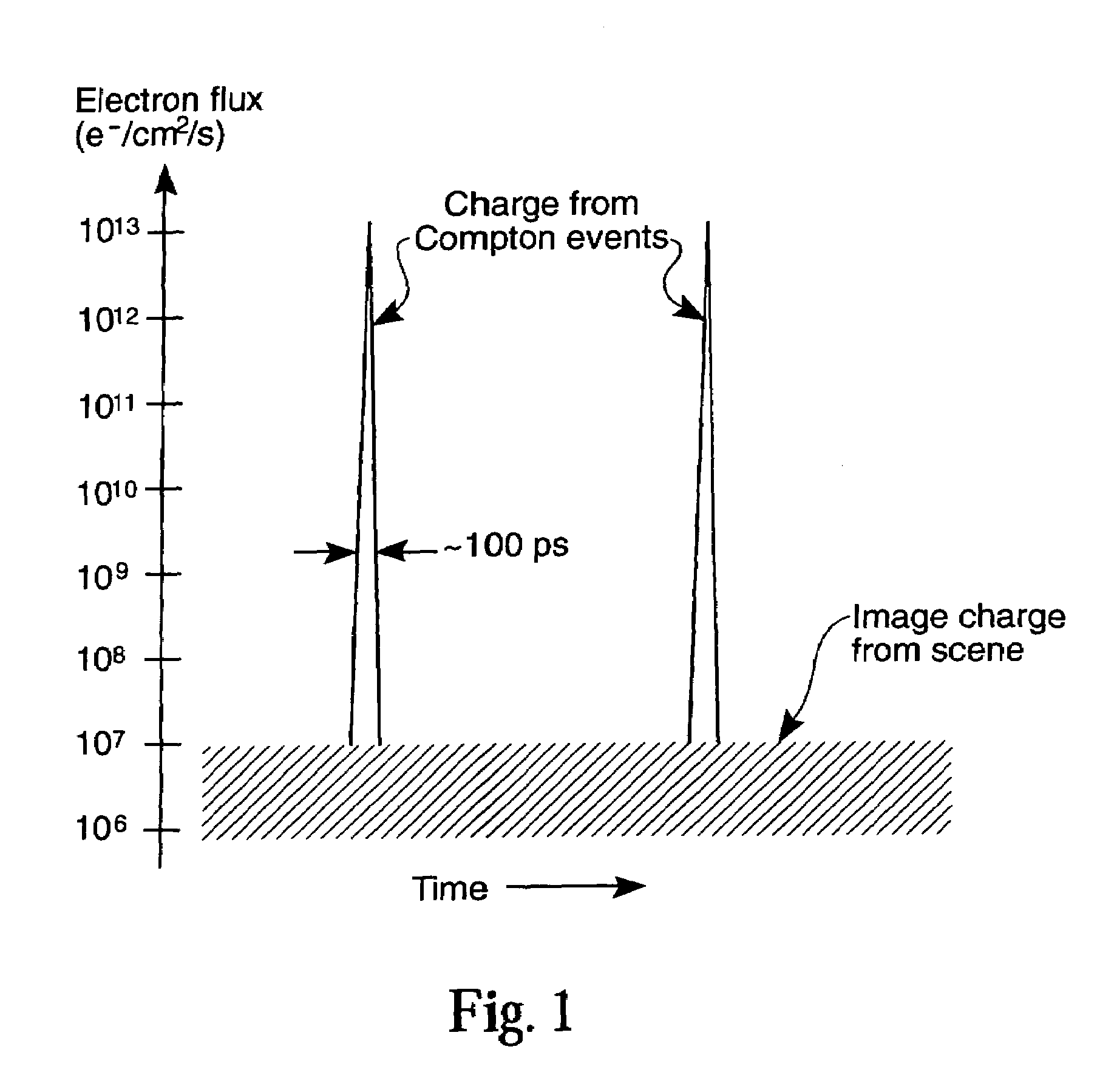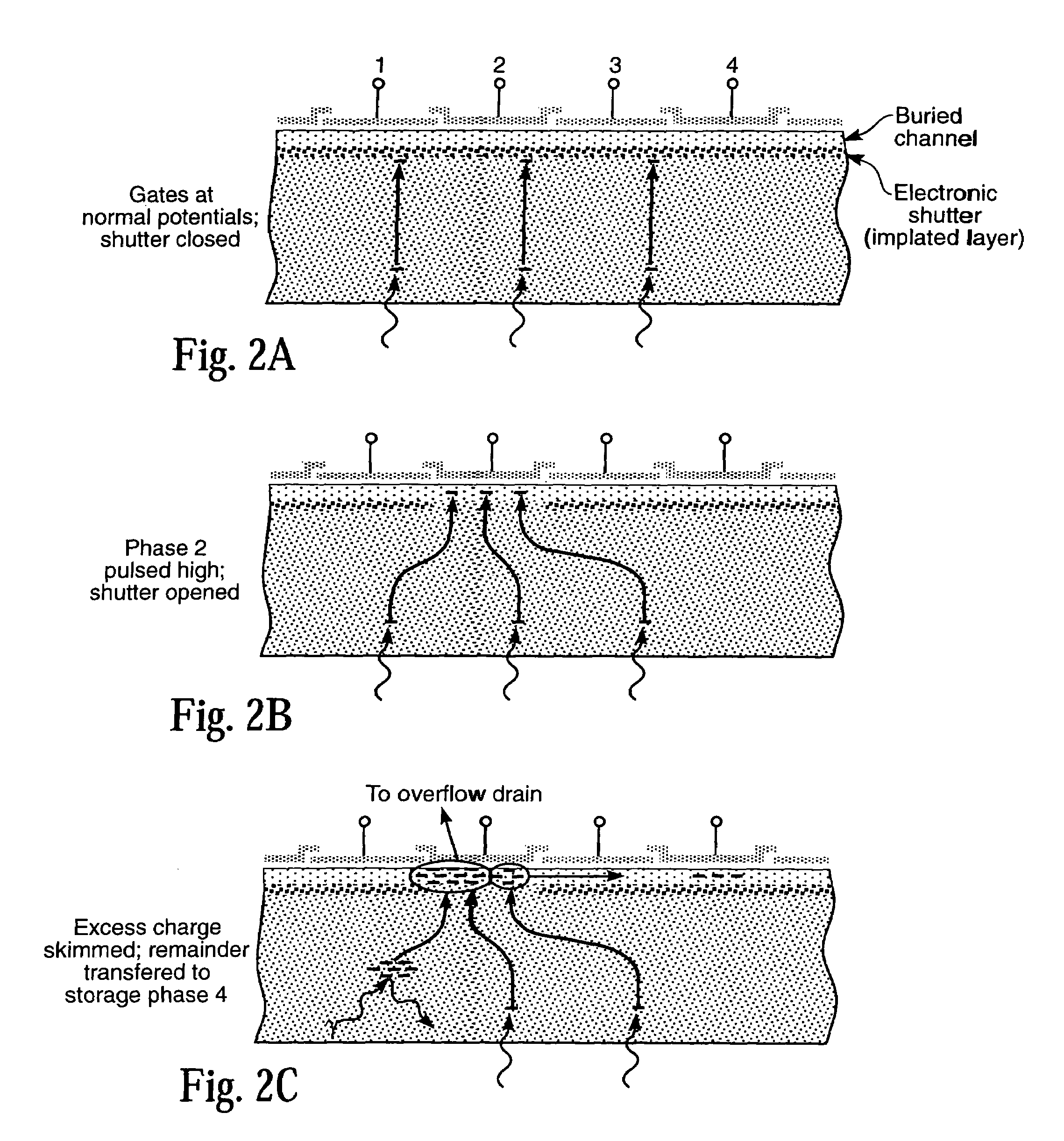Image sensor with reduced sensitivity to gamma rays
a gamma ray and image sensor technology, applied in the field of image sensor with reduced gamma ray sensitivity, can solve the problems of low sensitivity, poor quantum efficiency, and low sensitivity, and achieve the effect of removing the contaminating effect of gamma rays
- Summary
- Abstract
- Description
- Claims
- Application Information
AI Technical Summary
Benefits of technology
Problems solved by technology
Method used
Image
Examples
Embodiment Construction
[0016]Image sensors that must operate in an environment of high fluxes of gamma rays, are faced with the problem of charge generated by such radiation, particularly when the sensor must operate at low light levels. The charge is generated by Compton scattering of the gamma radiation, and can amount to several thousand electrons per event. This background charge, constitutes a random signal, that degrades the image quality, and can compromise device performance in critical applications, such as missile seekers. The purpose of this memo, is to describe a CCD structure that can reduce the charge collected from Compton events, with minimal impact on the sensitivity, to visible and near-IR photons.
[0017]An important feature that distinguishes charge generated by Compton scattering from charge generating by an illuminated scene, is the temporal flux of charge (FIG. 1). A Compton event produces a burst of charge, which, for the case of a fully-depleted CCD, is collected in the CCD wells on...
PUM
 Login to View More
Login to View More Abstract
Description
Claims
Application Information
 Login to View More
Login to View More - R&D
- Intellectual Property
- Life Sciences
- Materials
- Tech Scout
- Unparalleled Data Quality
- Higher Quality Content
- 60% Fewer Hallucinations
Browse by: Latest US Patents, China's latest patents, Technical Efficacy Thesaurus, Application Domain, Technology Topic, Popular Technical Reports.
© 2025 PatSnap. All rights reserved.Legal|Privacy policy|Modern Slavery Act Transparency Statement|Sitemap|About US| Contact US: help@patsnap.com



